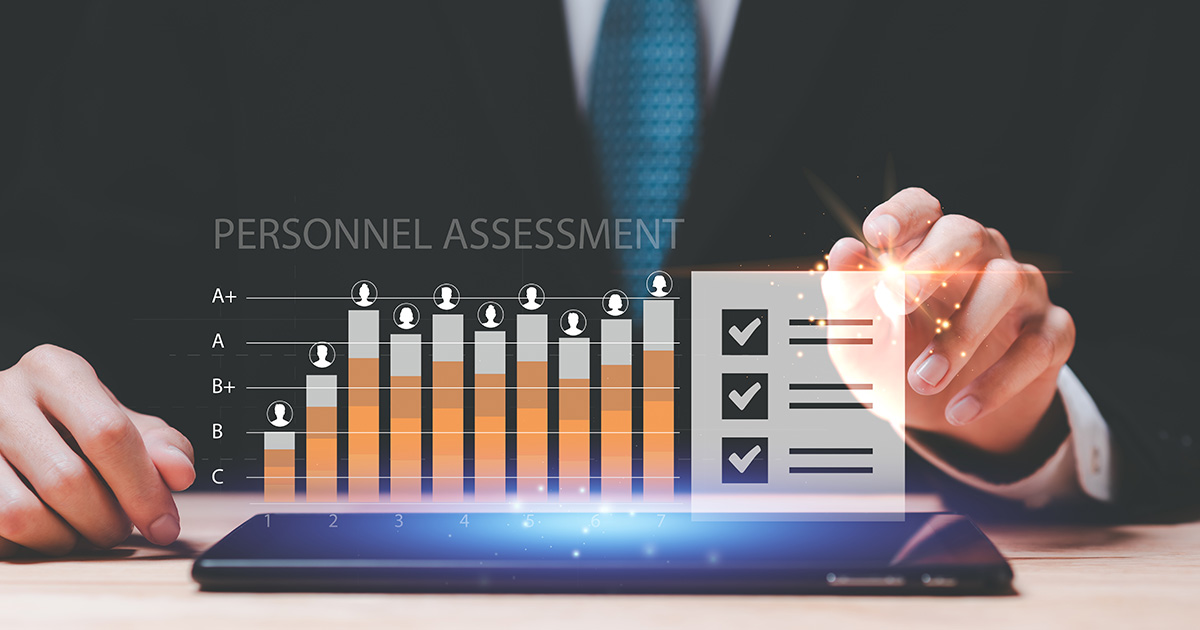
Why Development Reports Matter? Pre-Mid-Post Training Assessment Guide
Why do development reports matter? Competency acquisition, personalized learning, and data-driven training strategies with pre-mid-post assessment.

Millions of dollars are spent on corporate training every year. But the critical question is: How many organizations can measure the real impact of this investment? According to Brandon Hall Group's 2024 research, employee performance is 33% higher in companies that conduct regular development reporting. Organizations allocate an average training budget of $3,500-5,000 per person, yet most companies cannot measure the return on this investment.
The problem is simple: Training is conducted, but impact is not measured or reported. Development reports are the key to transitioning from the "how much" question of training to the "how effective" question.
What is Development Report and Why is it Critical?
Development Report Definition
Development report is a systematic documentation process that provides data-based tracking of employee or student development. It covers three critical stages:
Pre-Training
Establishing baseline level before training
Mid-Training
Development tracking during training
Post-Training
Learning outcomes after training
This cycle makes the development journey of individuals and organizations visible by creating a competency acquisition map.
Why Are Development Reports Important?
McKinsey 2024 Research: Companies using data-driven training strategies achieve 42% higher training ROI compared to traditional methods.
Kirkpatrick Model: Level 4 (business impact) measuring training's effect on business results can only be measured with systematic reporting.
Objective Decisions: The key to data-based decision making for promotions, talent management, and development plans.
Traditional vs Modern Reporting
Traditional Approach
Year-end Excel tables, subjective manager notes, manual data collection, one-time measurements.
Modern Approach
Real-time dashboard, AI-powered analysis, predictive analytics, benchmark comparison, continuous measurement.
Pre-Mid-Post Training Assessment: 3 Critical Stages
1. Pre-Training Assessment
Purpose: Establish baseline level and identify skill gaps.
Bersin by Deloitte Research: Training completion rate is 28% higher in companies conducting pre-assessment. When employees know they have a personalized training journey, their motivation increases.
Pre-Training Assessment Methods:
Diagnostic Test
Comprehensive test measuring existing knowledge and skills. Reveals which topics are strong/weak.
Self-Assessment
Employee evaluates their own competency level. Creates awareness and increases learning desire.
360-Degree Competency Inventory
Combines manager, peer, and subordinate assessments to create multi-dimensional baseline profile.
TestEd Solution: Pre-Training Assessment
With TestEd's mixed test system, Likert scale (behavioral competencies), multiple choice (technical knowledge), and open-ended questions (deep thinking) are combined in a single test to establish category-based baseline. AI word map discovers hidden needs in open-ended responses.
Output: Personalized training plan, learning objectives, skill gap map.
2. Mid-Training Evaluation
Purpose: Conduct formative assessment to identify those getting lost during training and provide early intervention.
Gartner Research: Learning retention is 47% higher in employees receiving continuous feedback. Instant correction prevents incorrect learning.
Why is Mid-Training Critical?
Early Warning
Identifies underperforming employees to provide additional support.
Instant Feedback
Keeps motivation high with real-time feedback.
Content Correction
Enables real-time improvement in training content.
Mid-Training Methods:
- Module-End Quizzes: Short assessment after each learning module for comprehension check.
- Peer Feedback: Peer-to-peer feedback for social learning.
- Micro-Assessments: Continuous measurement with 5-10 minute mini tests.
- Risk Score Tracking: Automatic alert system for declining participation or performance.
3. Post-Training Assessment
Purpose: Measure training effectiveness and calculate ROI through summative assessment.
LinkedIn Learning 2024 Report: Training transfer (workplace application) increases by 38% with post-assessment. Employees apply what they learn to work processes more effectively.
Post-Training Assessment Methods:
Final Test (Competency Confirmation Test)
Comprehensive test measuring whether training objectives are achieved. Foundation for certification.
Performance-Based Assessment
Measuring learning transfer through on-the-job observation and actual task performance.
Delayed Assessment (3-6 Months Later)
Long-term assessment measuring learning retention. Shows real business impact.
Post-Training Outputs:
Certification
Digital badge and certificate
Development Score
Pre-post comparison
ROI Report
Training return on investment
The Role of Reporting in Competency Acquisition
Competency acquisition is the ultimate goal of training. However, measuring and reporting competency is much more complex than knowledge tests.
IBM Skills Report 2024: Talent retention is 24% higher in companies conducting competency-based development tracking. When employees see themselves developing, their commitment to the organization increases.
Competency Acquisition Map
Competency map visualizes the gap between baseline and target competency level:
Competency Framework
Definition of technical and behavioral competencies required for each role. Example: Communication, Strategic Thinking, Conflict Management for Team Leader.
Skill Progression Tracking
Level tracking for each competency: Beginner → Developing → Competent → Expert. Progress seen with pre-mid-post.
Multi-Dimensional Competency Matrix
Multi-dimensional competency matrix shows each employee's complete competency profile on a single screen.
Reading Reports Correctly: Dashboard Analytics
Development reports become just a pile of numbers when not interpreted correctly. Modern dashboards turn data into action:
TestEd Dashboard: 4 Critical Metrics
Risk Score
Early warning for low participation or performance. Red: Urgent intervention, Yellow: Monitoring, Green: Normal.
Benchmark
Comparison with department and industry average. Shows where you stand.
Trend Charts
Development curve over time. Rising, falling, or plateau?
Word Map
Recurring themes in open-ended responses. Discovers hidden needs.
Gap Analysis: Current vs Target Competency
Gap analysis clearly shows which competencies need more work:
Example Gap Analysis: Team Leader Role
Personalized Learning Culture and Reports
One-size-fits-all training model no longer works. According to McKinsey 2024 report, personalized learning is 30% more effective than standard training.
What is Personalized Learning?
Personalized learning recognizes that each individual's learning pace, style, and needs are different. Reports are the foundation of this personalization:
Adaptive Learning Paths
Automatic learning route creation based on development reports.
Competency-Based Progression
Progress focused on competency acquisition, not time.
Learning Style Adaptation
Custom content for visual, auditory, kinesthetic learners.
3 Critical Roles of Reports in Personalization
1. Individual Development Plans (IDP)
Skill gap from pre-assessment creates personalized development route for each employee:
- Weak competencies → Additional support modules
- Strengths → Advanced content and mentor role
- Duration estimate based on learning pace
2. Adaptive Content Delivery
Content adaptation based on mid-training evaluation results:
- Low performance → Repeat topic in different format (video, infographic)
- Fast learners → Skip to next module
- AI-recommended additional resources
3. Self-Directed Learning
Employees take learning responsibility by viewing their own reports:
- Discover their strengths/weaknesses
- Set their own development goals
- Choose or customize recommended learning path
TestEd Personalization: Each competency is tracked separately with category-based scoring. With individual dashboard + department benchmark, employees see both their own development and position within the team. Next step is clearly shown with AI-powered development recommendations.
Developing New Strategies Based on Reports
The real power of development reports is enabling data-driven decision making.
Deloitte Global Human Capital Trends 2024: Leadership gaps are filled 40% faster in companies implementing data-driven talent strategy. Reports are the GPS of talent management.
1. Training Content Optimization
Development reports show which content is effective and which needs improvement:
Low Performance Modules
If multiple groups score low → Content revision needed. Is the topic complex? Are examples insufficient?
High Dropout Modules
If participation drops in certain module → Format change (video → interactive quiz, long → micro-learning).
Word Map Insights
If "time management" appears 67% in open-ended analysis → Time management module should be added to all trainings.
Real Success Story
A technology company saw 45% low performance in "data visualization" module in mid-training reports. They converted content to video format and added interactive dashboard examples. Performance rose to 78% in next period.
2. Training Format Changes
Micro-Learning
If retention is low in long modules → 5-10 minute bite-sized content.
Blended Learning
If online only is insufficient → Online + face-to-face workshop mix.
Gamification
Low engagement → Add badge, leaderboard, challenge.
3. Training ROI Enhancement Strategies
Budget Shift to High-Impact Programs
More investment in trainings showing ROI of 150%+, discontinue low ROI programs.
Pilot Programs: A/B Testing
Test two different training formats in small groups, expand winner based on reports.
Vendor Evaluation
Measure external training providers' performance with reports, replace low impact ones.
4. Talent Development Strategies
Development reports are the fundamental data for talent management:
High-Potential Identification
Those showing 30%+ development in pre-post reports, performing above benchmark → Candidates for leadership program.
Succession Planning
Backup plan for critical roles based on competency profiles. Reports show who is ready for which role.
Targeted Interventions
Early intervention based on risk score. Coaching or mentoring for critical employees showing low performance.
Development Reporting Ecosystem with TestEd
TestEd is a corporate assessment ecosystem that consolidates development reporting on a single platform.
TestEd's 7 Development Reporting Features
Pre-Mid-Post Tracking
Monitor all phases of training cycle on single platform. Complete visibility from baseline to final.
Category-Based Analysis
Separate score and development trend for each competency. Detailed reporting like Communication 78%, Leadership 65%.
AI Word Map
Automatic analysis of open-ended responses with GPT-5 Mini. Discover hidden needs and themes.
Risk Score System
Automatic early warning for low participation or performance. Never miss intervention timing.
Benchmark Dashboard
Comparison with department and industry average. Clearly see where you stand.
Predictive Analytics
Future performance prediction and risk analysis. Which employees have high development potential?
Export & Share
PDF/Excel report export and sharing with stakeholders. Ready formats for management presentations.
Real Success Story
250-employee technology company established pre-mid-post assessment cycle with TestEd.
68% → 91%
Training completion rate
+34%
Competency acquisition increase
127%
Training ROI
89%
Employee satisfaction
"With personalized learning plans, each employee could track their own development. We achieved incredible results in 6 months."
2025 and Beyond: Trends in Development Reporting
Real-Time Dashboards
Live development tracking, instant intervention opportunity. Continuous monitoring instead of year-end waiting.
AI-Powered Insights
Report interpretation with GPT integration, automatic action recommendations. AI assistant: "Strengthen this module."
Skills Passport
Portable competency profile, blockchain certificate verification. Proof for career transitions.
Predictive Learning Analytics
Which employee will need which training? Proactive development with churn risk prediction.
Gartner Prediction 2025: By 2027, 70% of Fortune 500 companies will use AI-powered development reporting. Those left behind will suffer losses in talent war.
Conclusion: Development Report is the Compass of Training
Development report is the evolution of training from the "how much" question (how many hours, how many people) to the "how well" question (how effective, which competency acquired). Simply conducting training is no longer enough; measuring and reporting its impact is mandatory.
5 Golden Rules of Development Reporting
1. Pre-Mid-Post Cycle: Measure all phases of training. Development is invisible without baseline.
2. Competency-Based Measurement: Category-based detailed analysis instead of overall score.
3. Personalized Learning: Each individual's development needs are different, customize according to reports.
4. Data-Driven Strategies: Don't just archive reports, take action. Use in content, format, budget decisions.
5. Continuous Improvement: Development reporting is not one-time, it's a continuous cycle.
Competency acquisition increases by 30%+ with pre-mid-post assessment cycle. Personalized learning is no longer a luxury, it's a competitive advantage. Data-driven development culture can be established in 30 days with TestEd.
Frequently Asked Questions
How often should development reports be prepared?
Development reporting should be a continuous cycle. Pre-training to establish baseline, mid-training for progress tracking on weekly/module basis, post-training at the end of training to measure learning outcomes.
Why is pre-training assessment important?
Pre-training assessment enables skill gap analysis by establishing baseline level. According to Bersin by Deloitte research, training completion rate is 28% higher in companies conducting pre-assessment.
How is training ROI calculated?
Kirkpatrick model's 4 levels are used: 1) Reaction, 2) Learning, 3) Behavior, 4) Results. ROI formula: [(Training Benefit - Training Cost) / Training Cost] x 100. Calculated with pre-post assessment.
How is personalized learning implemented?
Applied based on data from development reports. Individual learning plans created according to skill gaps from pre-assessment. McKinsey 2024: Personalized learning is 30% more effective than standard training.
What does category-based scoring mean?
Measuring each competency area separately instead of a single overall score. With TestEd's mixed test system, each category can use different question types and is scored independently.
What's the difference between TestEd and other platforms?
TestEd is designed for corporate development reporting. It offers pre-mid-post tracking, category-based analysis, AI word map, benchmark dashboard, and 50+ templates. Contact for details.






Try TestEd Free for 14 Days!
Build data-driven development culture with pre-mid-post assessment cycle, AI-powered analysis, and category-based reporting.
Try Free for 14 Days